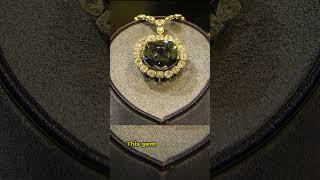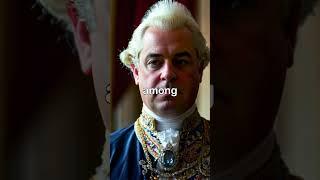The Dark Legend Behind the World’s Most Cursed Gem: The Hope Diamond! #shorts
Описание
The Hope Diamond, one of the world’s most famous and valuable gemstones, is renowned not only for its stunning blue hue and unparalleled clarity but also for the dark legends that surround it. Weighing 45.52 carats, this extraordinary diamond has captivated historians, gemologists, and the public alike with its beauty and the sinister curse believed to be attached to it. The story of the Hope Diamond is as intricate and fascinating as the gem itself, blending history, legend, and intrigue.
The Hope Diamond's history dates back to the 17th century. Originally mined in the Golconda mines of India, it was a large, uncut stone known as the "Great Blue Diamond." The diamond was acquired by French merchant Jean-Baptiste Tavernier in 1666. Tavernier, a noted gem dealer, sold the diamond to King Louis XIV of France, who had it recut and set into a royal necklace. This was the beginning of the diamond’s journey through European royalty and its entanglement with a supposed curse.
The curse of the Hope Diamond is said to have originated from its alleged theft from an Indian temple. According to legend, the diamond was stolen from a Hindu shrine, and the priests who protected it had placed a curse on it to punish those who would possess it. The curse was said to bring misfortune, death, and disaster to its owners, a theme that became more prominent as the diamond changed hands over the centuries.
The first recorded misfortune linked to the Hope Diamond was the death of King Louis XIV in 1715. Although not directly attributable to the diamond, the period marked a series of calamities for the French monarchy. The diamond eventually passed into the possession of Louis XV’s successor, Louis XVI, and his wife, Marie Antoinette. Both met tragic ends during the French Revolution, further fueling the belief in the diamond's curse.
After the execution of Louis XVI and Marie Antoinette, the diamond vanished from the historical record for a time. It resurfaced in the early 19th century when it was purchased by British diamond dealer Henry Philip Hope, who gave the diamond its modern name. The Hope Diamond's association with misfortune continued as its new owners seemed to experience a series of personal and financial tragedies.
In the 20th century, the diamond was acquired by American socialite Evalyn Walsh McLean, whose life was marked by a series of unfortunate events, including the death of her children and the loss of her fortune. McLean’s struggles were widely attributed to the diamond's curse, although many of her personal issues predated her ownership of the gem.
In 1949, the Hope Diamond was purchased by the jeweler Harry Winston, who donated it to the Smithsonian Institution in 1958. It has been on display at the Smithsonian Museum of Natural History in Washington, D.C., ever since. Despite its storied past, the diamond has not been associated with any new misfortunes or tragedies since its arrival at the Smithsonian.
The Hope Diamond remains a captivating piece of history, not only because of its remarkable beauty and value but also due to the enigmatic curse that has followed it throughout its journey. Whether or not one believes in the curse, the story of the Hope Diamond serves as a compelling blend of fact and legend, illustrating how a single object can become entwined with the narratives of those who possess it.
#HopeDiamond #CursedDiamond #LegendaryGems #HistoricalJewels #CurseOfTheHopeDiamond #FamousDiamonds #DiamondMysteries #JewelryHistory #SmithsonianDiamond #MysticalGems
**Sources:**
- “The Hope Diamond: The Legendary History of a Cursed Gem” by Richard Kurin
- “Diamonds: A Jubilee of Masterpieces” by Joe Rosenberg
- “The Curse of the Hope Diamond” – Smithsonian Magazine
- “The Hope Diamond: The Story Behind the Gem” – National Geographic

![you've betrayed your lover to rule the world [dark classical playlist]](https://www.lovermusic.ru/uploads/thumbs/870de392b-1.jpg)


















